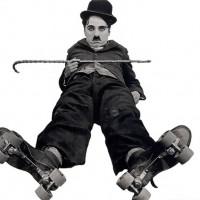
It was an era that saw the birth of many stars that lit up the screen, including Garbo and Dietrich. However, by 1929 a technological innovation had changed the course of cinema. In the economic boom soon after World War 1, cinema moguls Carl Laemmle, Adolph Zukor, William Fox and few more controlled the reins on the film industry.
Genres and Stars –
The studios began to turn out stories that repeated themes and structures, forming what would later be dubbed ‘genres’. But, it was westerns that became a staple of the studios in 1920s. Films made good use of Californian locations. Cowboy stars who seldom deviated from their established screen roles, included W.S Hart, Tom Mix and Hoot Gibson.
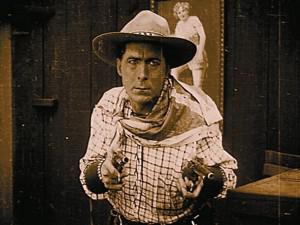
W.S Hart in his signature cowboy stance
It was not until 1923; ‘The Covered Wagon’ and John Ford’s ‘Iron Horse‘ (1924), the artistic possibilities of the genre were showed. But, it was American comedy that reached the widest audiences worldwide during the Silent Film era. This was all due to comic geniuses such as Charlie Chaplin, Buster Keaton, Harold Lloyd, Harry Langdon and Oliver Hardy, all of whom reached the pinnacle in the 20s.
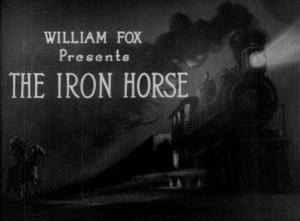
John Ford’s Iron Horse
The studios recognized the value of typecasting, so that the audience quickly identified the persona of the stars by the roles they played. One of the biggest of these stars was Rudolph Valentino. He starred in Rex Ingram’s ‘The Four Horsemen of the Apocalypse’, and became the Latin lover of the screen. He was typecasted as the male equivalent of the vamp. ‘The Sheikh’ also sealed his seductive image forever.
In the optimism and materialism of the 1920s, Hollywood began to represent glamour as a defiance of conventional morality. Because of concerns over the immortality of film business both off and on screen. In 1921, the ‘Motion Picture Producers and Distributors of America’ was founded as a self-regulating body.
Sin and sophistication –
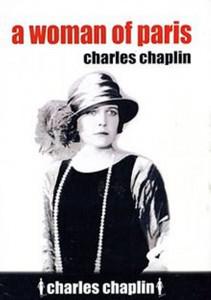
A Woman Of Paris
Enter the Jazz age, and ‘It Girl’ Clara Bow and ‘Flapper’ Joan Crawford were seen as freewheeling symbols, who replaced the post-Victorian ideals of womanhood. Griffith’s melodramas, ‘Broken Blossoms’ (1919) and ‘Way Down East (1920) marked the end of an era, While Cecil B. DeMille made a series of risqué domestic comedies that tested limits. At the time, Lubitsch admitted that he had been inspired by Charlie Chaplin’s ‘A Woman of Paris’ (1923), in which Edina Purviance, Chaplin’s leading lady in almost 30 comedies, played a high-class prostitute.
The studios by now started to buy talented directors from Europe. These included Ernst Lubitsch and F.W Murnau from Germany, Michael Curitz from Hungary and few more. There were also leading stars such as Pola Negri, who was the first European to be given full Hollywood star treatment. Another European star, who went on to win the Best Actor Oscar twice was Swiss-born Emil Jannings.
Action and Horror –
Hollywood was also blessed with home-grown talent in the form of Lon Chaney who was famed for his make-up skills and was known as ‘The Man with a Thousand Faces’. It was his portrayal of series of grotesques in films such as ‘The Hunchback of Notre Dame’ and ‘The Phantom of the Opera’ brought a quality of humanity even to the most warped and terrifying characters. Also popular was Douglas Fairbanks who did films such as ‘The Mask of Zorro’, ‘Robin Hood’ and ‘The Thief of Baghdad’ in order to flaunt his muscular athleticism. He was an all-rounder and had special interest in set-design.
Europe and Russia -
Post World-War 1, the prosperity of the film industry in France and Italy witnessed increased imports of American films. Nevertheless, despite the Hollywood presence, Europe continued with great artistic quality films such as ‘Napoleon’, ‘The Passion of Joan Arc’, ‘Pandora’s Box’ and ‘Metropolis’.
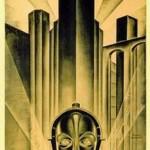
Metropolis

Radio-Keith-Orpheum
Due to the unremarkable production in the 20s, conditions for full-grown for sweeping innovation. In 1926, Warner Bros. presented the first synchronized programme using a sound-on-system called Vitaphone. The main intention was to substitute live performances, orchestra and stage shows. This lead to the WB’s first sound film, with no dialog called ‘Don Juan’, 1926. The film used only musical score to accompany moving silent images.
In 1927, the first feature film with sound was launched – ‘The Jazz Singer’, this time featuring lip-sync recordings of songs and few dialogues. The success of the movie further saw the installation of sound recording and projection equipment in studios and cinemas. In May 1928, almost all studios decided to adopt Western Electric’s flexible sound-on-recording process. By late 1929, thousands of cinemas were equipped with sound and many silent films had added dialogues.
Sound led to the birth of Radio-Keith-Orpheum or RKO, whose trademark was a pylon on a globe transmitting radio signals. Sound also led to the birth of the genre – Musical. Other countries began to demand dialogues in their own languages, which began to disintegrate the international film market. It soon split into as many markets as there were languages.
Box-Office Hits of the 1920s –
- The Big Parade, 1925
- The Four Horsemen of the Apocalypse, 1921
- Ben-Hur, 1925
- The Ten Commandments, 1923
- What Price Glory, 1926
- The Covered Wagon, 1923
- Way Down East, 1920
- The Singing Fool, 1928
- The Gold Rush, 1925
1920-29 in brief –
1920: The marriage of the century between Douglas Fairbanks and Mary Pickford
1921: Fatty Arbuckle is acquitted of the rape and manslaughter of Virginia Rappe
1922: Robert J. Flaherty release ‘Nanook of the North’, the first film to be called a documentary. Rin Tin Tin saves Warner Bros. from bankruptcy
1924: MGM is founded by the merging of three production companies
1925: ‘The Phantom of Opera’ is released starring Lon Chaney in his most notable role. Chaplin’s ‘The Gold Rush’ is released
1926: ‘Don Juan’ is released by Warner Bros. with sound effects and music but no dialog. Rudolph Valentino dies, thousands attend his funeral and some attempt suicide.
1927: Fox’s Movietone newsreel, the first sound news film is released
1928: Mickey Mouse makes first appearance in ‘Steamboat Willie’
1929: George Eastman demonstrates his first film in Technicolor. The first Academy Awards ceremony is held in Hollywood
